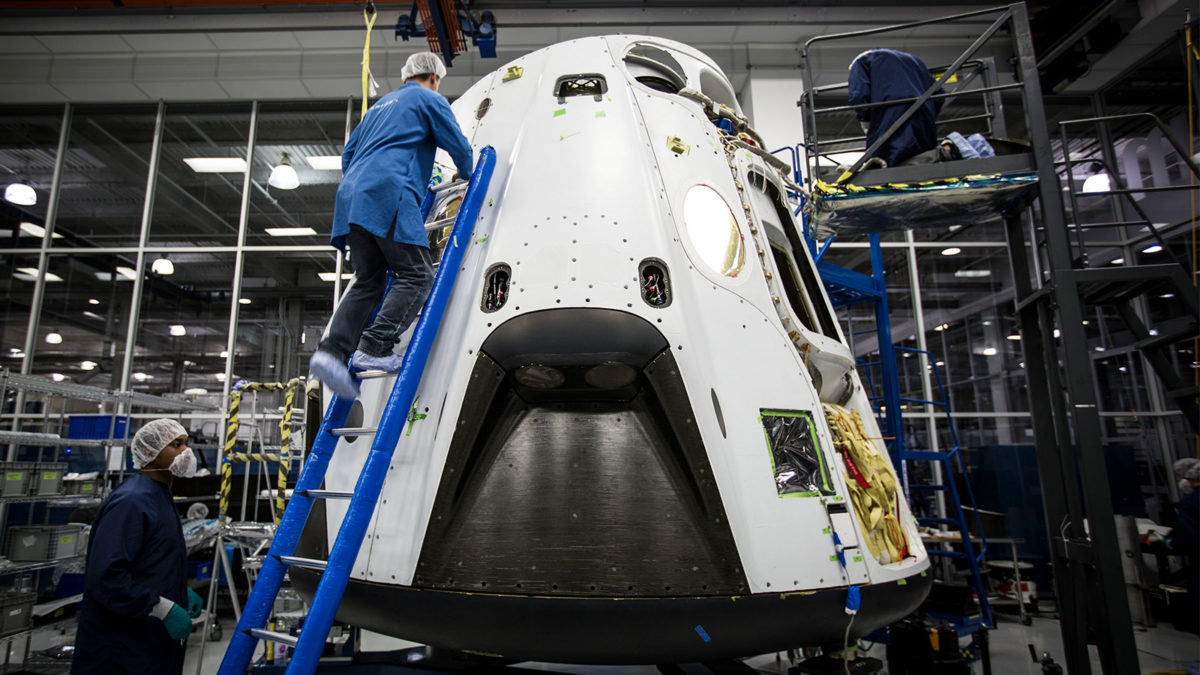SpaceX confirms destruction of Crew Dragon capsule
By Cat Hofacker|May 2, 2019
A SpaceX official confirmed today that one of the company’s Crew Dragon capsules was “destroyed” during an engine test two weeks ago at Cape Canaveral, Florida, ending speculation among space watchers about the vehicle’s condition.
NASA has been counting on SpaceX and Boeing, its other Commercial Crew contractor, to get the U.S. back into the business of launching astronauts on American vehicles.
The capsule was destroyed “during the activation of the SuperDraco system,” said Hans Koenigsmann, SpaceX vice president of mission assurance, according to a video of the briefing at NASA’s Kennedy Space Center. He was referring to the abort engines that would whisk the Crew Dragon away from a failing Falcon rocket during launch.
“At the test stand we powered up Dragon and it powered up as expected. We completed tests with the Draco thrusters,” the smaller engines that help the capsule maneuver in orbit, Koenigsmann said. “We fired them in two sets, each for five seconds, and that went very well. And just prior, before we wanted to fire the SuperDraco there was an anomaly, and the vehicle was destroyed.”
Koenigsmann said although the investigation is ongoing, SpaceX has “no reason to believe there is an issue with the SuperDracos themselves.”
This particular Crew Dragon, one of six crew capsules SpaceX is developing, had completed an unoccupied test docking at the International Space Station in March.
In an interview earlier today, NASA Administrator Jim Bridenstine said the agency is “in the process” of working through whether the SpaceX incident means a delay for Commercial Crew.
“We are looking to potentially move forward some of the Crew Dragons that would have been operational, but again we haven’t made any decisions here; we’re just looking at all of the options,” he said.
The other contractor, Boeing, has been delayed and won’t launch its first orbital test flight until August.
On April 20, photos and videos on social media showed orange clouds billowing out from SpaceX’s Landing Zone 1 outdoor facility, where Falcon stages return and where the company conducts tests. At the time, rocket experts said this indicated a leak of hypergolic fuel, meaning a fuel that spontaneously ignites when mixed with an oxidizer.
Koenigsmann said SpaceX’s Cargo Dragon, which does not have the same SuperDraco thrusters because it doesn’t carry crew, is still approved for tomorrow’s resupply mission to the ISS. The launch had been delayed from earlier this week because of an electric power failure aboard the space station.
“We have looked at all of the common links between the two spacecraft,” Koenigsmann said. “We viewed that and we approved them for flight by both teams, NASA and SpaceX, in common.”





